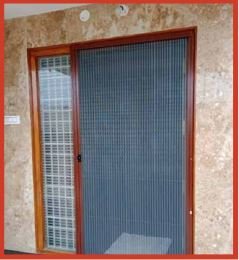Clean the mesh screens of the door regularly to remove dust, dirt, and debris. Use a soft brush or vacuum cleaner to gently brush away any buildup on the mesh. You can also wipe down the screens with a damp cloth and mild detergent if necessary. Avoid using abrasive cleaners or harsh chemicals, as these can damage the mesh.
Periodically inspect the mesh screens for any tears, holes, or damage. Repair any small tears or holes using a patch kit designed for mosquito screens. For larger tears or damage, consider replacing the damaged section of the mesh or contacting a professional for repairs.
Inspect the hinges, handles, and other hardware components of the plated mosquito door regularly. Tighten any loose screws or bolts and lubricate moving parts with a silicone-based lubricant to ensure smooth operation. Replace any damaged or worn hardware as needed.
Clean the frame of the plated mosquito door regularly to remove dirt and debris. Use a mild detergent and water to wipe down the frame, and avoid using abrasive cleaners that could scratch or damage the surface. Inspect the frame for any signs of corrosion or damage, and repair or replace any damaged sections as necessary.
Check the weather stripping seals around the edges of the door frame regularly. Replace any worn or damaged weather stripping to ensure a tight seal when the door is closed, preventing insects from entering through gaps in the mesh.
If you notice any significant damage or issues with the plated mosquito door that you’re unable to repair yourself, consider contacting a professional for inspection and repairs. A qualified technician can assess the condition of the door and recommend any necessary repairs or replacements.



